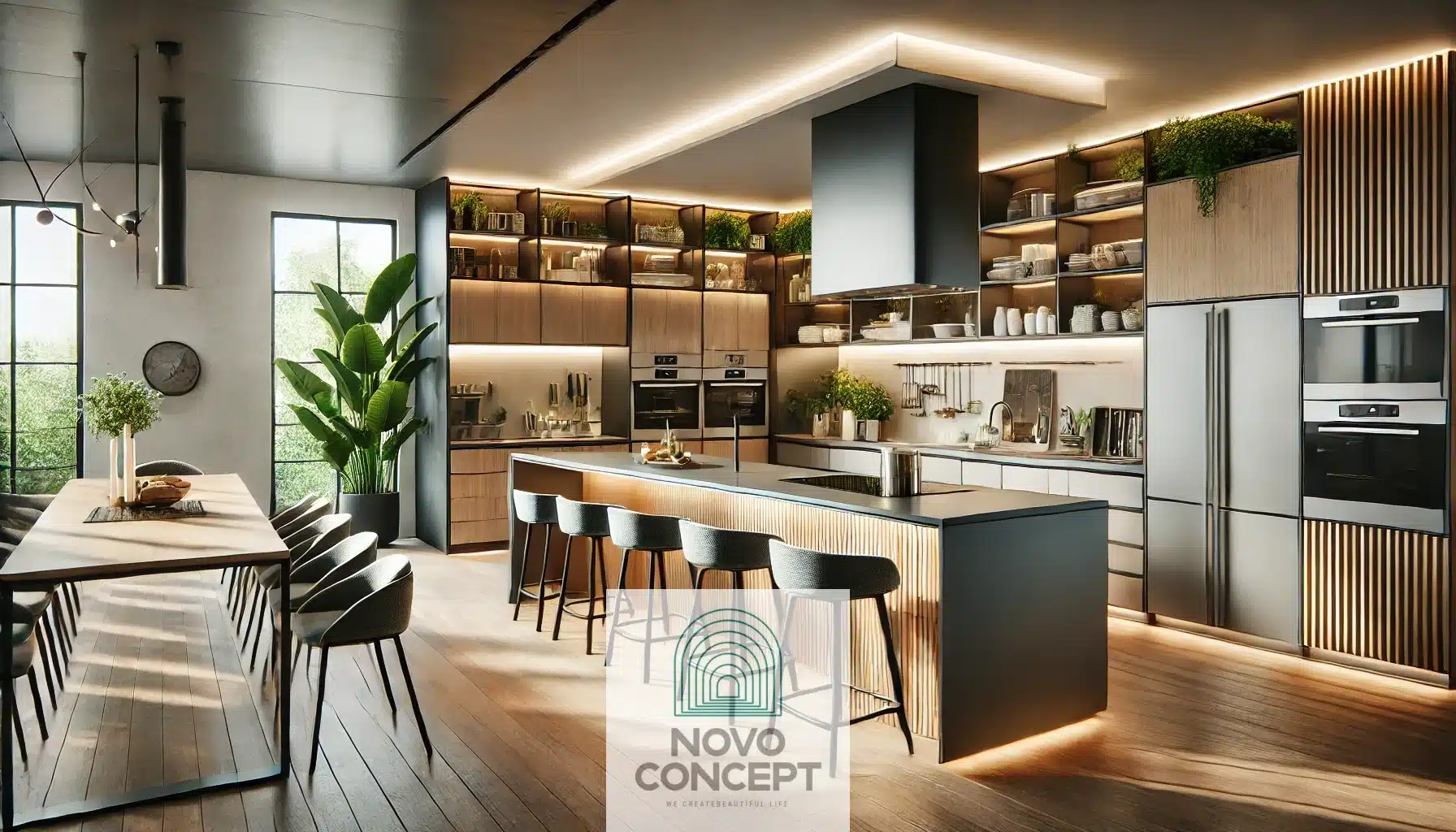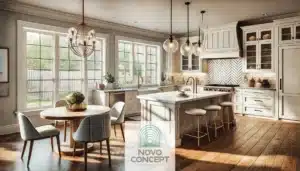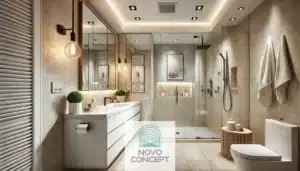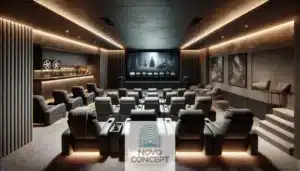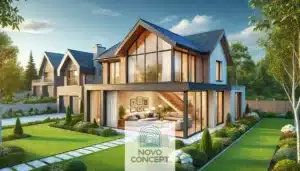Whether you’re planning a full-scale renovation or simply seeking ways to enhance your existing kitchen, incorporating functional features is the key to boosting efficiency and usability. A well-designed kitchen not only simplifies daily tasks but also elevates the overall cooking and dining experience. Here in this article from Novo Concept are five essential features that every kitchen should include.
essential features for kitchen: Smart Storage Solutions
One of the most common challenges in any kitchen is managing storage effectively. Cluttered countertops and disorganized cabinets can hinder productivity and make the space feel cramped. By implementing smart storage solutions, you can create a more organized and spacious kitchen.
Pull-Out Shelves: Install pull-out shelves in base cabinets and pantry areas. These allow you to access items at the back without having to remove everything in front, making storage more efficient and user-friendly.
Vertical Dividers: Vertical dividers are excellent for storing flat items such as baking sheets, cutting boards, and trays. They help maximize cabinet space and keep frequently used items within easy reach.
Lazy Susans and Corner Cabinets: Utilize awkward corner spaces with lazy Susans or specialized corner cabinets. These rotating trays make it easy to access items stored in hard-to-reach areas.
Overhead Storage: Make the most of your vertical space with overhead storage. Open shelving or hanging pot racks not only free up counter space but also add a decorative element to your kitchen design.
By integrating these storage solutions, you can create a kitchen that is both functional and visually appealing, ensuring everything has its place.
Ergonomic Work Zones
An efficient kitchen layout revolves around ergonomic work zones designed to minimize movement and streamline tasks. These zones enhance workflow, making cooking and meal prep more enjoyable.
Prep Zone: Position your prep area close to the sink and include ample counter space for activities like cutting, mixing, and assembling ingredients. Consider adding a butcher block or a dedicated cutting surface for added functionality.
Cooking Zone: The stove and oven should be strategically placed to allow easy access to cooking utensils, pots, and pans. This minimizes unnecessary movement and keeps essential tools within reach.
Cleaning Zone: Located near the sink, the cleaning zone should include dish storage, cleaning supplies, and a trash can for convenient waste disposal during meal prep.
Serving Zone: Create a designated space for serving meals, whether it’s a breakfast bar, countertop, or dining table. This makes it easier to transition from cooking to serving, especially when hosting guests.
By designing your kitchen with these zones in mind, you can reduce effort and increase efficiency, transforming daily cooking tasks into a seamless experience.
High-Quality Appliances
Investing in quality appliances is crucial for a functional and efficient kitchen. Modern appliances not only enhance performance but also offer advanced features that simplify daily tasks.
Smart Refrigerators: Equipped with touchscreens, built-in cameras, and Wi-Fi connectivity, smart refrigerators help you manage grocery lists, check food inventory, and even order groceries directly from the fridge.
Induction Cooktops: These cooktops are faster and more energy-efficient than traditional gas or electric stoves. They offer precise temperature control and are easy to clean, making them a great choice for modern kitchens.
Built-In Ovens: Wall ovens or double ovens save space and provide flexibility for multitasking. They’re ideal for those who love to bake or prepare multiple dishes simultaneously.
Dishwashers with Smart Features: Look for energy-efficient dishwashers that offer quiet operation and smart connectivity. These allow you to monitor and control cycles from your smartphone, adding convenience to your daily routine.
Choosing appliances that suit your cooking style and household needs can elevate your kitchen’s functionality, making it a pleasure to use.
Effective Lighting
Lighting plays a crucial role in both the functionality and ambiance of your kitchen. A well-lit space enhances visibility for cooking tasks while creating a warm and inviting atmosphere.
Task Lighting: Illuminate countertops with under-cabinet lighting to make food prep safer and more efficient. Pendant lights over islands or bar areas also provide focused task lighting.
Ambient Lighting: Use ceiling fixtures, recessed lights, or chandeliers to create a welcoming ambiance. These light sources set the mood for family meals and gatherings.
Accent Lighting: Highlight architectural features or decorative elements with accent lighting. This adds depth and character to your kitchen, elevating its aesthetic appeal.
By layering different types of lighting, you can ensure your kitchen is both practical and visually appealing, catering to various activities and moods.
Functional Kitchen Islands
A kitchen island is a versatile feature that enhances both functionality and style. It serves as a multi-purpose space, offering additional counter space, storage, and seating.
Additional Counter Space: Islands provide extra surface area for meal prep, making it easier to handle multiple dishes simultaneously. This is particularly useful during family gatherings or holiday feasts.
Seating and Socializing: Incorporate seating options like bar stools to create a casual dining area or a spot for guests to socialize while you cook. This fosters a sense of community and encourages interaction.
Storage Solutions: Include built-in cabinets and drawers in your island design. These can store cookware, utensils, and other essentials, reducing clutter in the main kitchen area.
Integrated Appliances: Consider adding appliances such as a second sink, a wine fridge, or a built-in cooktop to your island. These features can transform the island into a fully functional workspace.
By incorporating a kitchen island, you can maximize your kitchen’s potential, making it the heart of your home where cooking, socializing, and dining seamlessly come together.
Conclusion about essential features for kitchen
Designing a functional kitchen goes beyond aesthetics. By integrating smart storage solutions, ergonomic work zones, high-quality appliances, effective lighting, and a functional kitchen island, you can create a space that enhances your daily life. Whether you’re a seasoned chef or a casual cook, these features will ensure your kitchen is both practical and stylish, making it a joy to use every day.

